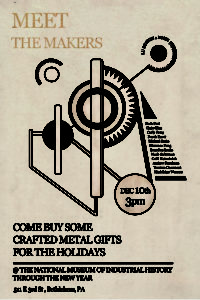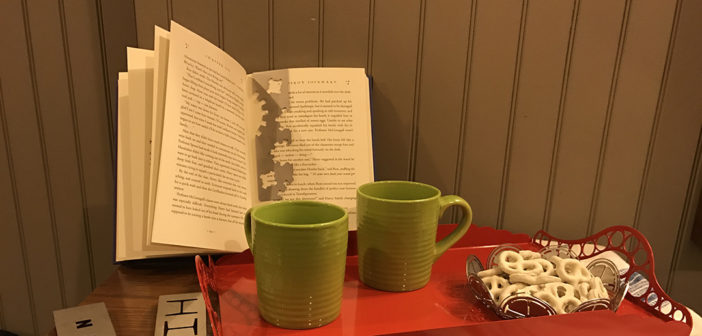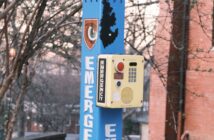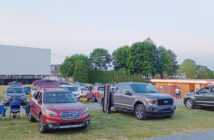
Courtesy of Andy Freedman.
Late nights in the lab, 15 plus hours, cork screws, sheet metal and wood. These are just a few of the things that make up a student’s experience in Product Design III.
Product Design III is a class in which students are able to explore their creativity, independence and marketing skills within the context, as Noah Saltzman, ’17, would say, of a “real business setting.” It’s the third and last class within the product design sections, and students use their prior knowledge and experience from sections one and two to help guide them.
Saltzman and Andrew Freedman, ’17, along with the rest of their classmates, have been working all semester to design and create inventive products, and now they’re working on the most important product: their last one.
Freedman said the goal is to make a design using sheet metal so it can be sold to the newly-opened National Museum of Industrial History.
“The idea of using sheet metal as a material has a lot to do with Bethlehem and its background with the steel mills,” Wesley Heiss, the course’s instructor, said.
These materials connect the products to the background of Bethlehem, which in turn makes the product more likely to be accepted by the National Museum of Industrial History.
The students will display their products Saturday at an event called “Meet the Makers” with hopes of the product getting a bid. The event is hosted in conjunction with the National Museum of Industrial History, where their products would then become displays.
“Even though you don’t sell well, it’s still a great experience because you get feed back,” Heiss said.
But before the products can be sold they must be made.
Saltzman said the process starts with thinking of a product to make that fits within certain criteria. Some of the criteria he cited is products being made out of sheet metal or flat boards or having the price lower than $8.
It’s Heiss’ job is to guide students through these decisions, but also to let them make them on their own.
“(Heiss) took us to the manufacturing places and basically said ‘my hands are off’, which basically meant it was up us to decide who to work with,” Saltzman said. “Taking the time to reach out to the manufacturing places was (on us).”
Freedman said every Monday students come to class with three sketches or ideas, and every Wednesday they have to have a prototype.
“Even if you’re dead set on an idea, the process that takes place leads you to think of new ideas and because of that some people will end up changing their mind and change their product,” Freedman said.
He said the challenge helps the creative process, and without it many students wouldn’t have found or discovered some of the products they ended up creating.
“Once you think of an idea you get it laser cut out of chipboard which is cheap, because you want to be cost effective, and then fold it to get a real representation of what you’re making,” Saltzman said.
He said the process is used to ensure that one’s product is realistic and can actually be made. Rather than buying materials and then later finding out it doesn’t work, students are able to make a model first, which saves time and money.
Saltzman’s project consists of making a low-seated stool out of sheet metal with a wood piece centered throughout the bottom. His product will be one of the more costly projects, but it is also one of the bigger projects.
Freedman is working on a wine bottle opener with handles and a body that resemble the steel stacks.
Other products currently being made by the class’s 13 students include candle holders, serving trays, candy bowls and lamps, among others. Most of the products are small and can be held in the palm of a hand. Production costs range from $10-$50.
Saltzman said while the class encourages students to be competitive and successful in producing their product, the students also support each other and want to see each other succeed.
Not only does the class bring unity and interactions in its students, but also within the the community.
“There are a lot of people who show up to this event, most of them non-Lehigh affiliated, so (students) interact with an audience they wouldn’t typically interact with, an audience that consists of Bethlehem residents,” Heiss said.
Heiss said the course gives students an important opportunity to work in the real world rather than in a typical academic setting.
“This class tends to fly under the radar of Lehigh students, and I feel it’s an opportunity that people don’t realize is on campus,” Saltzman said. “What they don’t realize is it gives us the opportunity to get involved in and see and contribute to what Bethlehem has to offer.”






Comment policy
Comments posted to The Brown and White website are reviewed by a moderator before being approved. Incendiary speech or harassing language, including comments targeted at individuals, may be deemed unacceptable and not published. Spam and other soliciting will also be declined.
The Brown and White also reserves the right to not publish entirely anonymous comments.